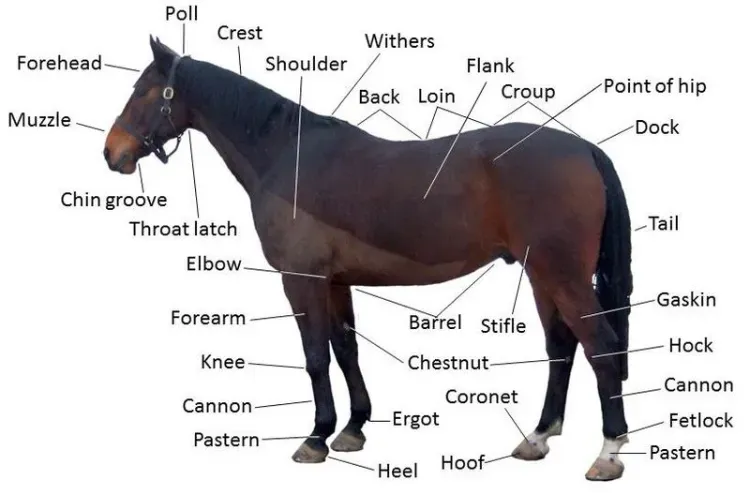
This is the first in a series of articles looking at different parts of the horse for strength, stamina, and soundness. There is no such thing as a perfect horse but they must have serviceable conformation, enough to meet your needs and to keep the horse sound. Expecting a horse to do something they find conformationally difficult results in problems.
Refer to the diagram above showing parts of the horse throughout this article.
The subheadings with photographs shown below are of Rosie taken when she had reached 18 years of age. She had extremely clean and unblemished front legs up to and beyond her retirement at 20 years young.
The 10 things to look for in the front leg
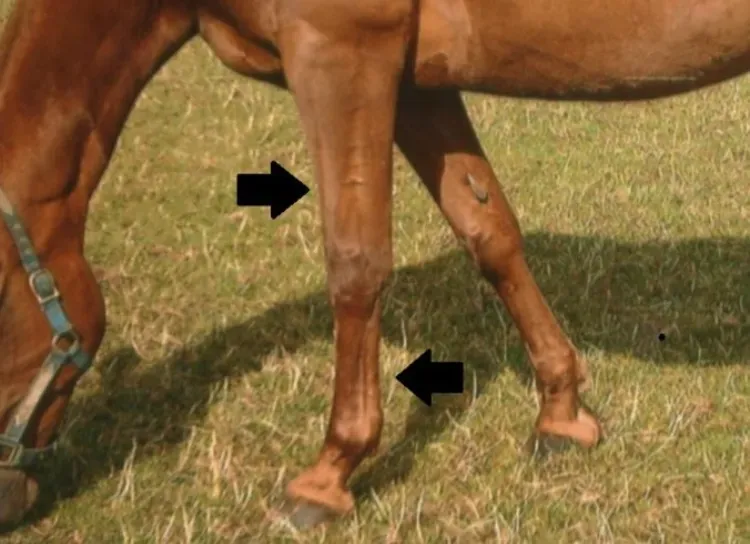
1. Look for short cannon bones
The cannon bone must be significantly shorter than the forearm. This provides a mechanical advantage in locomotion.
Rosie has this mechanical advantage. Her knee to fetlock length is much shorter than her forearm. This makes for strength.
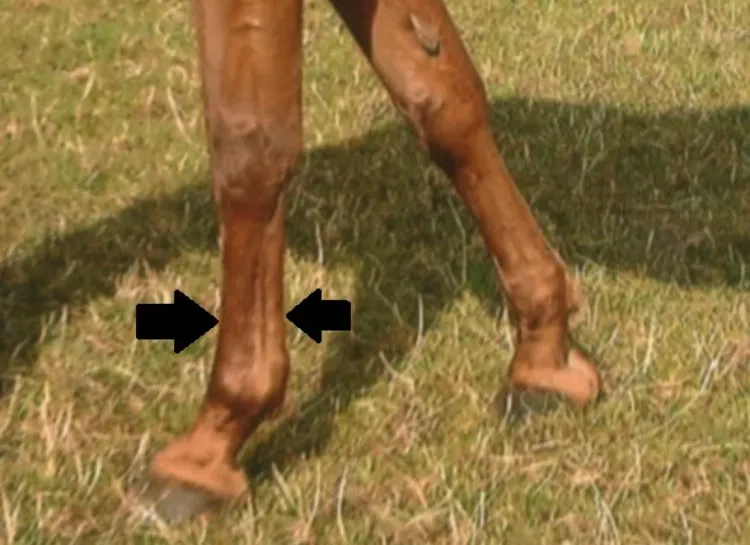
2. Look for flat cannon bones
When viewed from the side, the cannon bone must appear flat rather than round. This also provides a mechanical advantage when the horse is in locomotion.
Rosie has good flat bone. Her back tendon is set back from the cannon bone. This also makes for strength.
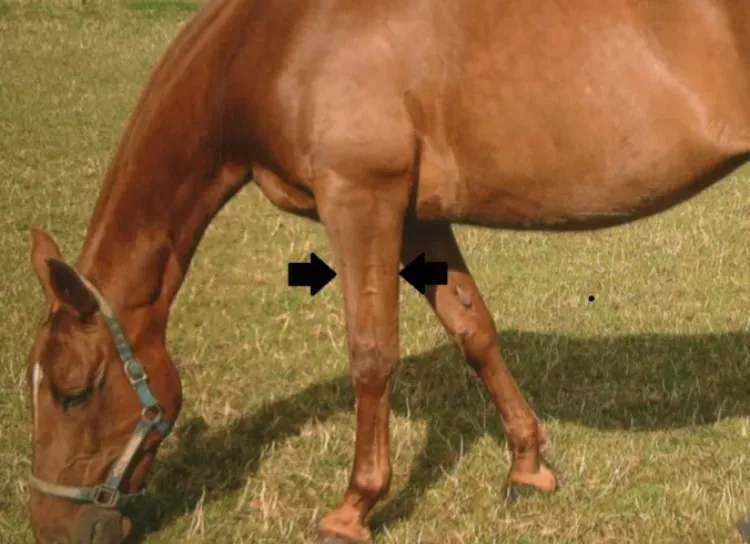
3. Look for strong forearms
The forearm must appear well muscled and broad in comparison with the cannon bone dimensions.
Rosie scores well with good muscling between her elbow and knee. She also possesses good muscle definition.

4. Look for large cannon bones
The size of the cannon bone, measured below the knee must be proportional to the horses fit body weight otherwise the horse is too well topped.
Rosie does not lack bone in relation to her body mass, but the ratio will not be as good as many short and lighter framed horses.

5. Look for strength just below the knee
The circumference of the cannon bone just below the knee should be about 0.5 inches bigger than the circumference measured in the middle of the cannon bone. Otherwise the horse is tied in below the knee.
Rosie has 8 inches circumference in the middle of the cannon bone and 8.5 inches circumference below the knee. She is not tied in below the knee.
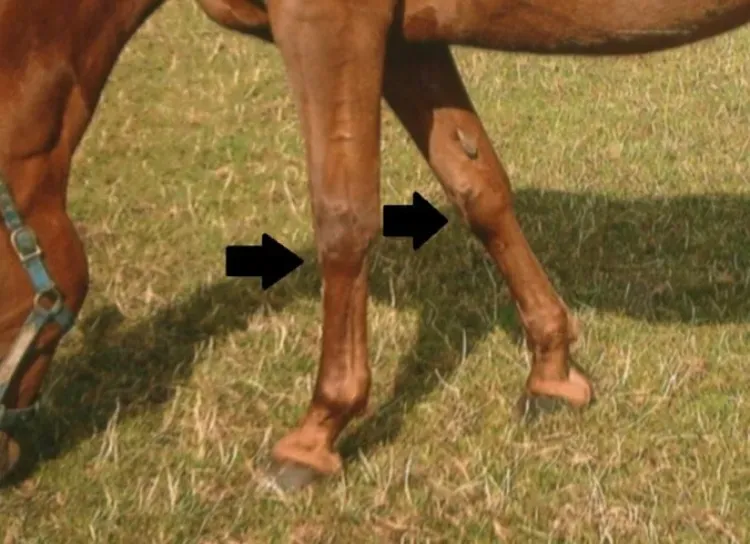
6. Look for a flat knee
The knee should appear large and flat from the front, rather that small and round. This provided room for good tendon attachment to the bone.
Even from a side view it can be seen that Rosie has large and flat knees. This adds strength and durability.
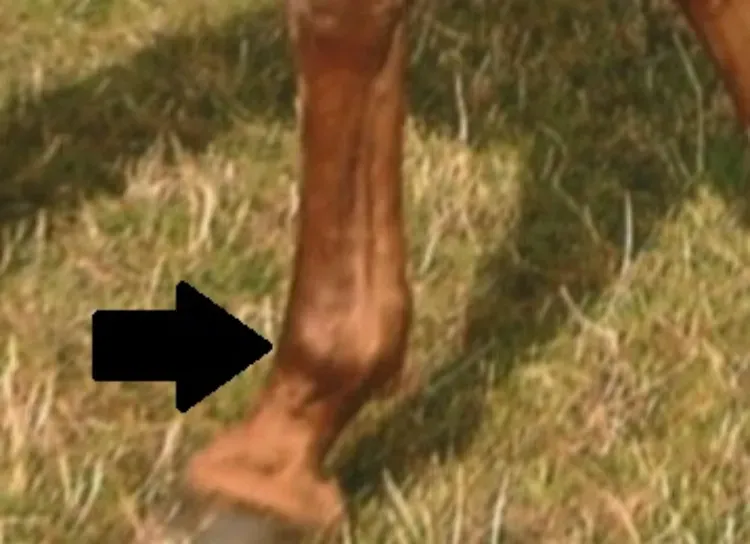
7. Look for size in the fetlock
The fetlock should be large for good tendon attachment but should not appear apply round. It should be a clean fetlock.
Rosie has good fetlocks for tendon attachment and this is a feature of strength.
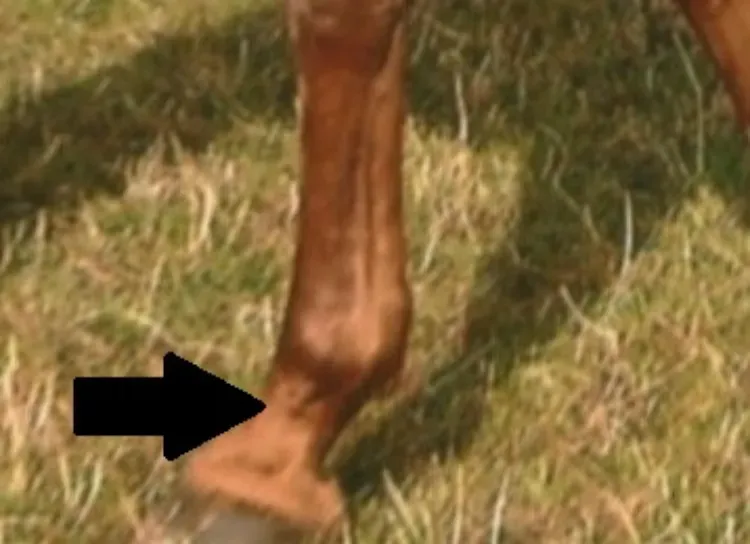
8. Look for a good pastern
The pastern should be wide and not too long or too short. The pastern should be the same angle to the ground as the shoulder and ideally at about 45% to the vertical to absorb concussion.
Rosie has wide pasterns but they are slightly too short and less than 45% to the vertical.

9. Look for vertical cannon bones
From the side when the horse is standing full square the front leg should be vertical to the ground. This is important for soundness.
When Rosie stands full square her cannon bones are vertical to the ground.
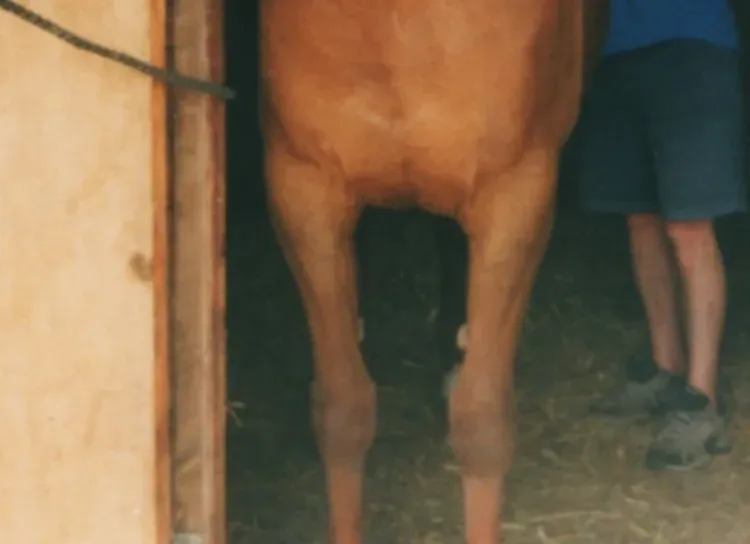
10. From the front the horse should have a straight leg
From the front the horse should have a vertical cannon bone in line with the centre of their knee. This helps soundness.
Rosie has cannon bone in line with her knees and vertical to the ground.
Rosie scores very well in the front leg. Ideally a little more size in the cannon bone and a little more slope to the pastern would be better. The conformation of this front leg is very suitable for any leisure and competitive activities. Rosie stood up to work and enjoyed being ridden.
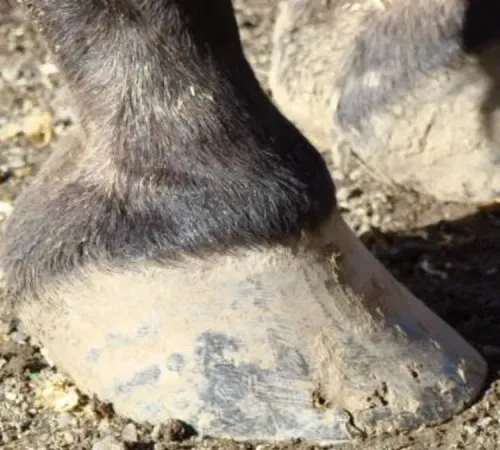
Article Suggestion
A Snapshot – Low Heels and Horse Soundness
